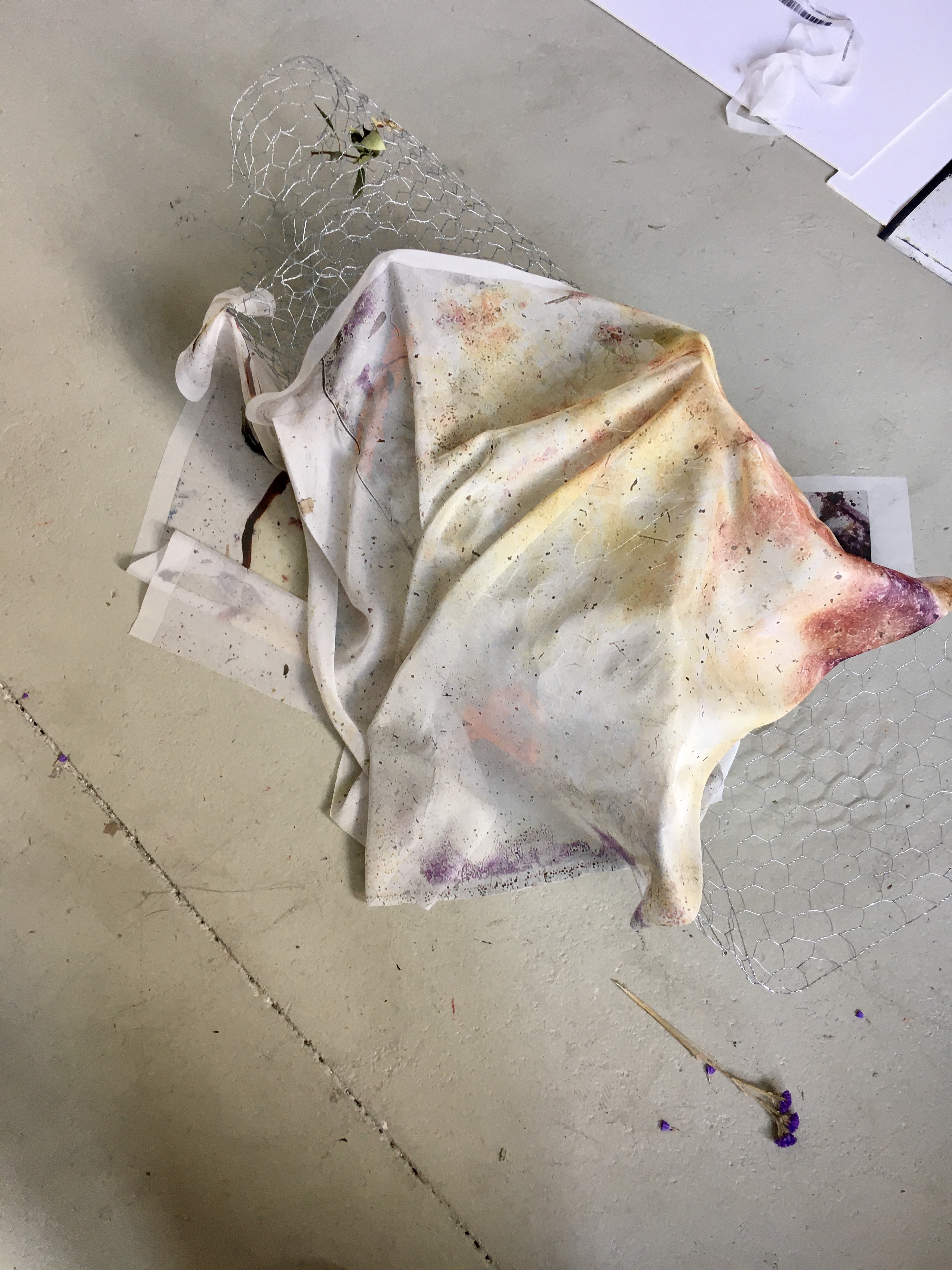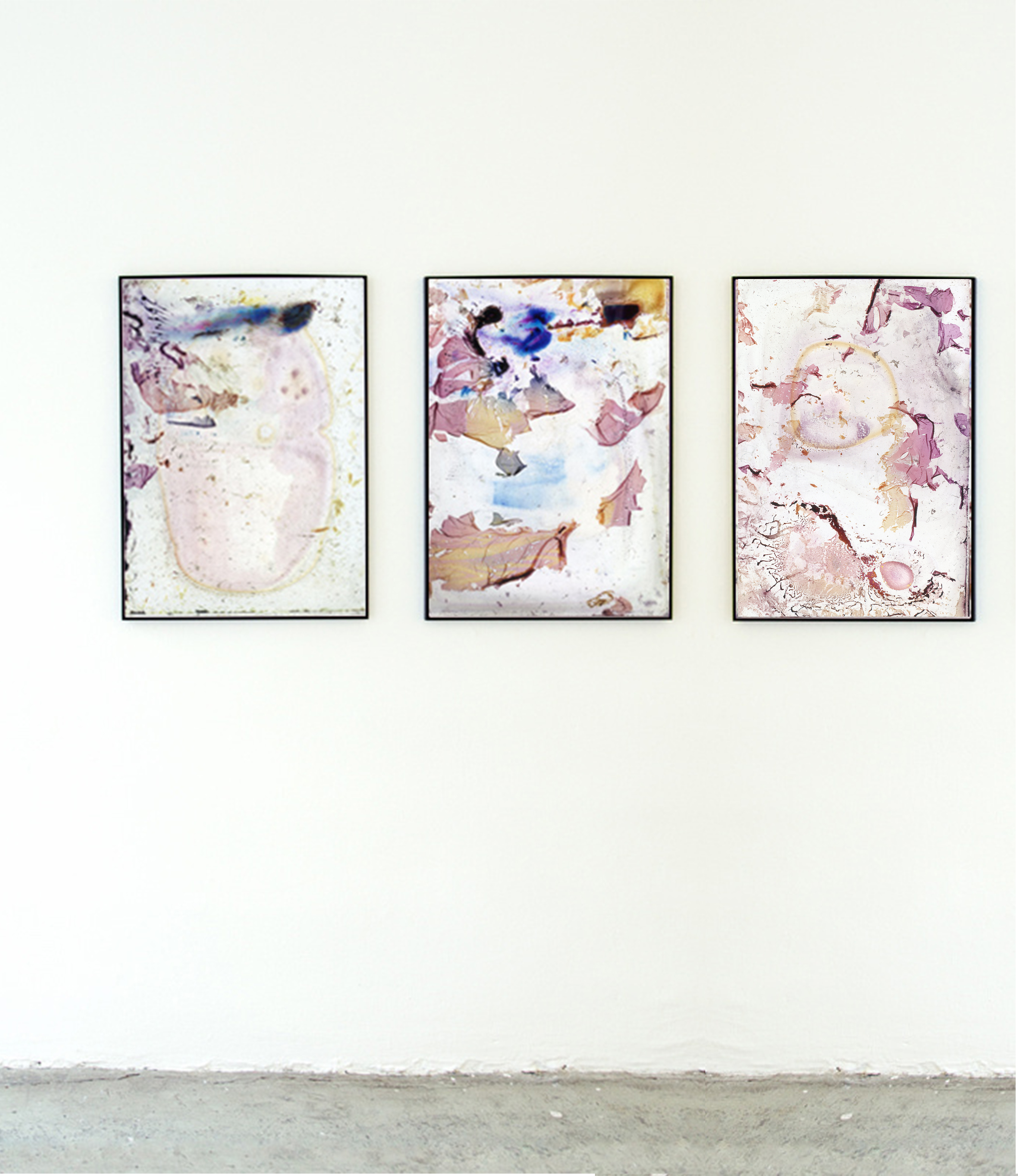![]()
![]()
Three days of rain, 2019
C-Print 50x70cm, Textile 70x70cm
![]()
Prints on textile 70x70cm, purchase on request
Chiffon, poly & silk
![]()
C-Print on Hahnemühle 50x70cm 4+ 2 A/P
![]()
![]()
![]()
![]()
![]()
![]()
Walter Benjamin war es, der im Hinblick auf die Fotografie und ihrer technischen Reproduzierbarkeit, vom Verfall der Aura sprach. Dieser Verfall erfährt in der natürlichen Zersetzung einzelner Farbnegative aus dem Familienarchiv von Takasaki-Lauw eine Umkehrung im Sinne einer Wiederherstellung des Unnahbaren und Einmaligen: Die ursprünglichen Informationen entziehen sich nicht nur einer Sichtbarkeit, auch liegt im natürlichen und veränderlichen Prozess des Verschimmelns das Momenthafte als auratische Erfahrung inne. Während der ursprüngliche Charakter der Negative verschwindet, stellt er gleichzeitig die Basis für eben jene neuen Farben, Formen und Strukturen dar. Gerade im Verfall der ursprünglichen sichtbaren Information schreibt sich diese in die Oberfläche ein. Es ist die Spur des Vertrauten, die Erinnerung, die in ihrer identitätsstiftenden Funktion thematisiert wird. Gleichzeitig wird die geläufige Vorstellung des Erinnerns eines Moments in der Vergangenheit zu Gunsten einer offenen und niemals abgeschlossen Erfahrung hinterfragt. So wie das einst Sichtbare in den Negativen verblasst, sich verändert und zu neuen (Erinnerungs-)Bildern führt, formuliert Takasaki-Lauw Erinnern als einen Prozess, in welchem die Erinnerung selbst zu einem veränderlichen Gebilde wird. In der Folge konzeptualisiert die Arbeit auch die Identität im Sinne eines Produkts vieler solcher veränderlichen Erfahrungen als niemals abgeschlossen.
Text: Lynn Busch
en
It was Walter Benjamin who spoke of the decay of the aura in terms of photography and its technical reproducibility. This decay undergoes a reversal in the natural decomposition of individual color negatives from the family archive of Takasaki-Lauw in the sense of restoring the unapproachable and unique: the original information is not only not visible, the natural and changeable process of mold is also a momentary as auratic Experience. While the original character of the negatives disappears, it also forms the basis for precisely those new colors, shapes and structures. Especially when the original visible information decays, it inscribes itself on the surface. It is the trace of the familiar, the memory, which is addressed in its identity-creating function. At the same time, the common idea of remembering a moment in the past is questioned in favor of an open and never-ending experience. Just as what was once visible fades into the negatives, changes and leads to new (memory) images, Takasaki-Lauw formulates remembering as a process in which the memory itself becomes a changing structure. As a result, the work conceptualizes identity as the product of many such changeable experiences as never complete


![]()
